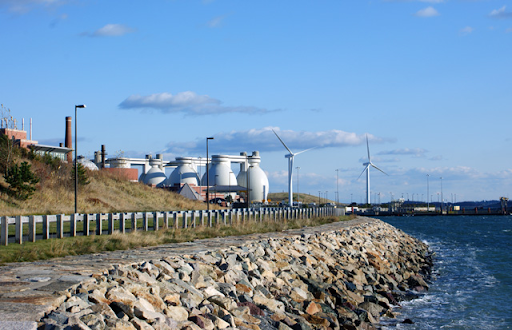Historic Health in the Harbor

Image description: A stone walking path curves in the distance with the ocean on the right, and Deer Island Wastewater Treatment Plant on the left.
Image credit: MWRA
Sources: NPS BOHA Cultural Landscape Report (2017); MWRA website
As we continue to experience and adapt to life in a global pandemic, it can be helpful to see examples of health and resilience in the past. Nowhere is that more apparent than in the Boston Harbor. Since the time that Europeans first arrived in Massachusetts, at least 7 of the 34 islands have been home to quarantine stations and hospitals, designed to keep the public safe in Boston and to improve the health of people reliant on these facilities.
Deer Island in particular is deeply rooted in the medical history of Boston. In 1677 it became the first quarantine station in the harbor for incoming ships, and in 1847 a quarantine hospital was built to help the region cope with a smallpox outbreak. The quarantine duties were eventually relocated to Gallops Island, but Deer Island continued to play a role in public health. In 1985, the @MWRA was established, and ten years later the Deer Island Wastewater Treatment Plant was in full operation, providing invaluable services in sanitizing the city of Boston and the harbor. They continue this work today and are at the front line of researching and improving public health. Did you know that the MWRA has been tracking COVID-19 RNA in wastewater for over two years? By looking at this data, scientists can track COVID trends within the region and even predict changes in the coming weeks. Check out the link below for MWRA’s most recent data! We are thankful to our harbor partners for their commitment to public health.
MWRA – Wastewater COVID-19 Tracking
#PublicHealth #FriendshipFriday #FindYourPark #EncuentraTuParque